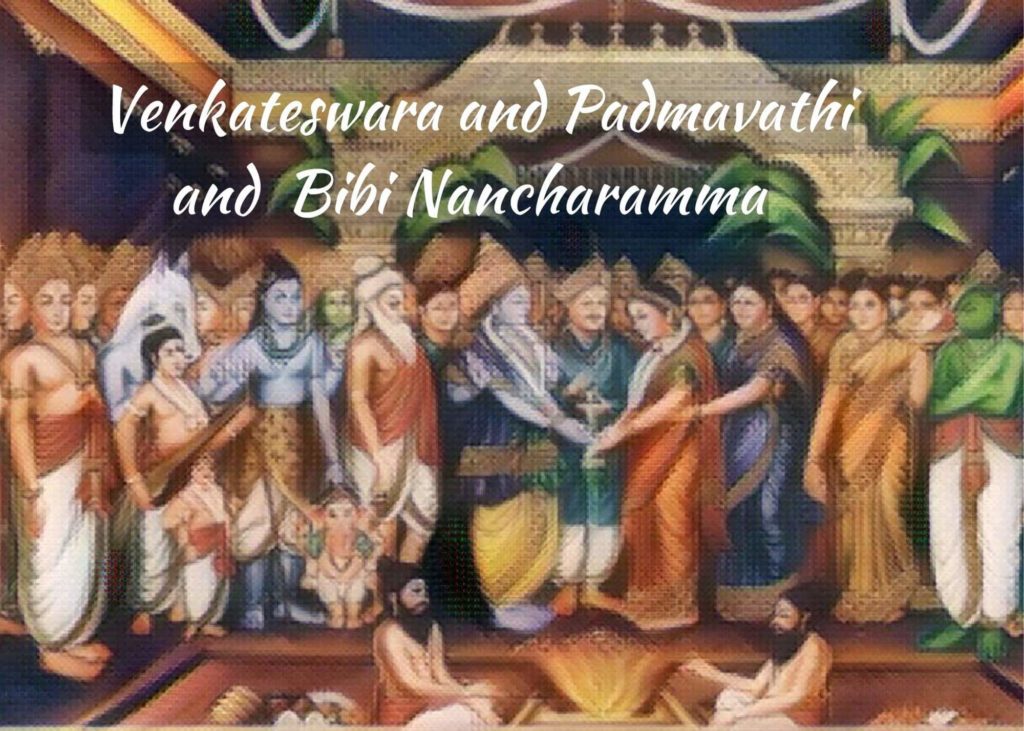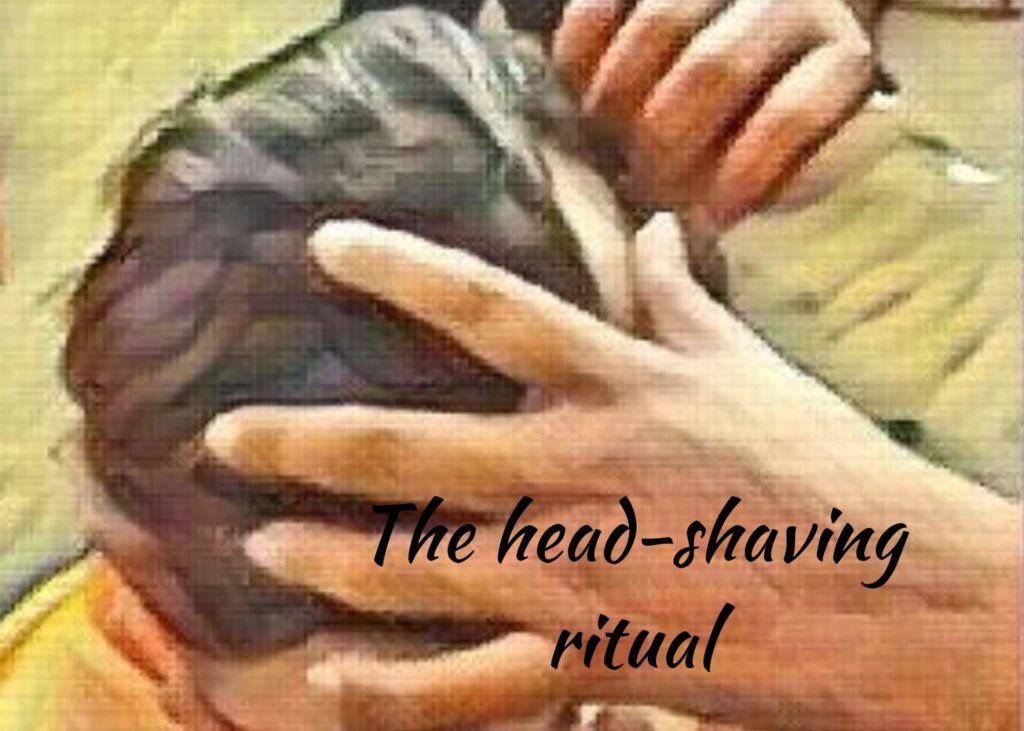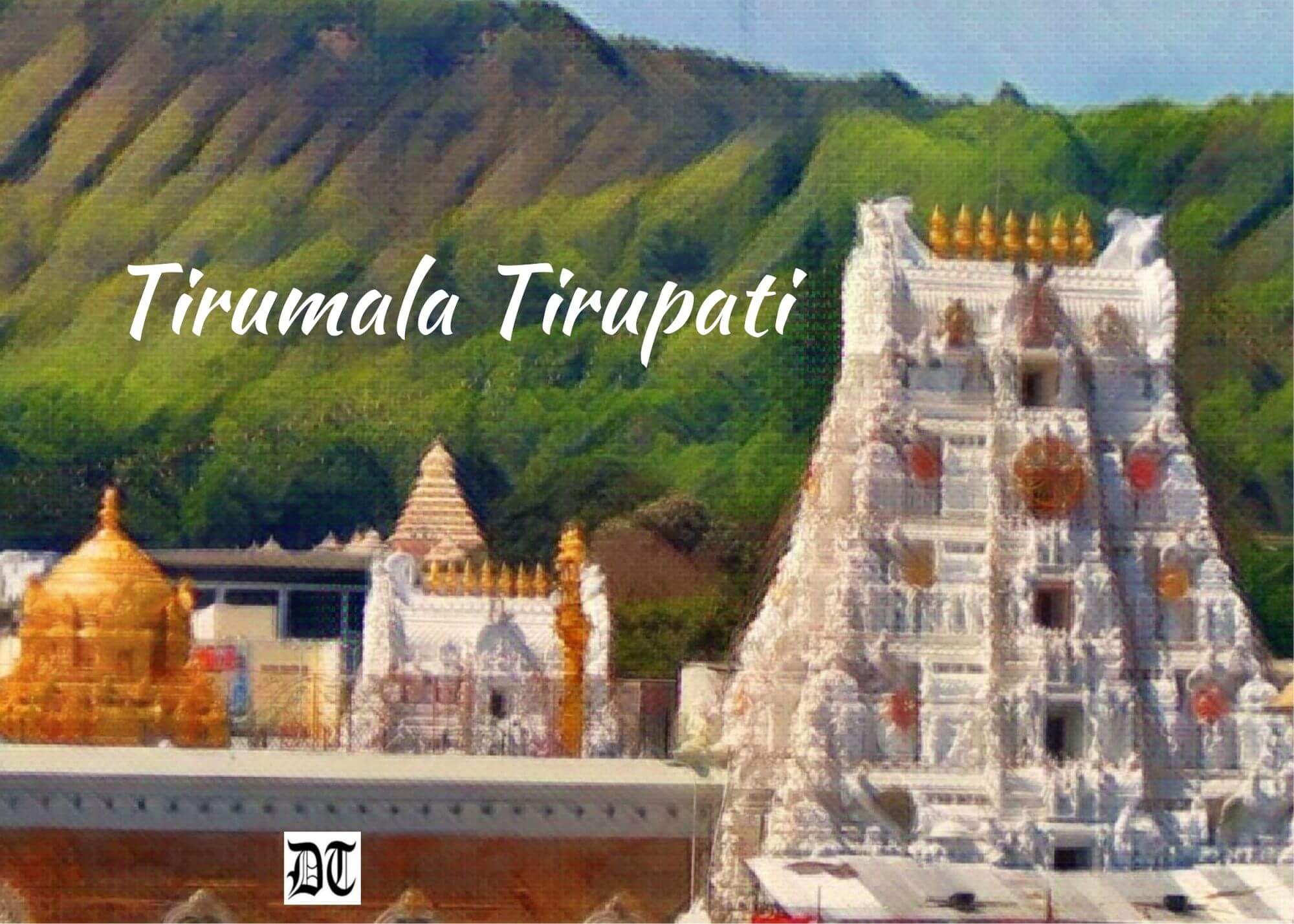Dr. Roopali talks of spiritual journeys, transformations and of serving the Lord Tirupati, in this memoir. She tells us how a principal Hindu God is secular, with a Muslim wife. An exclusive for Different Truths.

Tirupati lies in the Chittoor district of India’s Andhra Pradesh. It is referred to as the spiritual capital of Andhra Pradesh. The city is home to one of Hinduism’s most important shrines – the Tirumala Sri Venkateswara Temple.
The Temple was built in Dravidian architecture and is believed to have been erected starting in 300 AD. In the 11th century, the city of Tirupati became a great Vaishnava (devotees of Lord Vishnu) centre during the time of philosopher Ramanuja.
Lord Venkateswara also known as Srinivasa, Balaji, Venkatachalapathi, made Tirumala his abode five thousand years ago. An avatar of Lord Vishnu, He is the presiding deity who keeps troubles away.
Fifty to a hundred thousand devotees throng the temple every day. The administrators employ special crowd management tactics to maintain safety and allow devotees to get a glimpse of the Lord. In fact, the Harvard Business School even published a case study examining the queueing issues caused by the immense popularity of this temple. It is also the richest temple in the world on account of all the offerings presented by devotees.
In many renowned Hindu places of worship, like Amarnath in the upper reaches of northern India, and Sabarimala in the southern part of the peninsula, cross-community rituals provide insight into India’s complex faith practices.
Legend speaks of Lord Venkateswara being son-in-law to the Muslims.
Tirupati, too, has its own secular component. Legend speaks of Lord Venkateswara being son-in-law to the Muslims. Of his two divine consorts Padmavati and Bibi Nancharamma, the latter was the daughter of a general named Malik Kafur, in 1311 AD. Bibi Nancharamma is said to have protected the Lord’s image from rampaging raiders. In return the Lord gave her asylum by marrying her. Her idol has pride of place in the precincts of the Sri Venkateswara temple in Tirumala.
Practitioners of Christianity also play an important role in the administration of the temple as well as in the political life of the state of Andhra Pradesh. Thus, we find a clear reflection of the diversity and the secular nature of India’s philosophy.
I first heard of Lord Venkateswara Balaji of Tirupati from my university dormitory roommate Subbalakshmi.
I first heard of Lord Venkateswara Balaji of Tirupati from my university dormitory roommate Subbalakshmi. She belonged to Vijayawada – a town in Andhra Pradesh. “You must go to Tirupati temple to donate much more money. Diamonds, gold, and cash. People throwing into one hundi container. It gets full every day.” She spoke with great pride and reverence. “What you know?” She swung her closed fist at my face. “It is the richest temple in the whole world.”
Money and temple? I had read of Mammon, the greedy angel who couldn’t take his eyes off the gold paved floor of heaven. He thus missed the beatific face of God. My Biblical knowledge came to help me out. Fakirs and mendicants are lauded for their rejection of wealth. “In that case it is the last place on earth I will ever visit,” I retorted.
Subbalakshmi replied, “Why are you speaking like this? Balaji gets very angry with you. Lord Venkateswara Swami is a very powerful God. Something will happen to you. You just wait.” Tears of hurt filled her beautiful eyes. I couldn’t have cared less.

Mother had long cherished a desire that I should become a professor.
Mother had long cherished a desire that I should become a professor. Her rationale, “you talk too much. Best profession for you.” My dreams of a career in the civil services had already been effectively quashed by Father. “You will be at the beck and call of illiterate ministers. Somebody may even dump a dead body into your residential compound.” Father’s favourite scare story. Later it did happen to my friend, a Deputy Secretary somewhere in Bihar. A corpse was ceremoniously left inside her office.
True to Subbalakshmi’s prediction something did happen. Father’s sudden military posting to Delhi took us far away to the north of India. Good! I was very far away from Balaji’s wrath. That’s what I thought. Next door to our new home, a large board shouted, Sri Venkateswara College Tirumala Tirupati Devasthanam.
A job interview later, I was in the service of the Lord.
A job interview later, I was in the service of the Lord. Subbalakshmi’s warning had come true. A month into the new job, the History Department organised its first ever student trip to Tirupati Nothing like this had happened since the College’s 1961 inauguration by then President Dr. S. Radhakrishnan. I had promised never to visit the temple. Here I was on my way to Tirupati.
Subbalakshmi was right. He truly was very powerful. Lord Venkateswara was making sure I travelled to his abode. I pretended not to be afraid. After all I had a scientific mind. None of this hocus pocus mattered.
The trip organiser was a Das Kapital thumping Marxist.
The trip organiser was a Das Kapital thumping Marxist. The students were mostly from farming backgrounds in the North Indian agrarian state of Haryana. They knew nothing of South India, its temples or architecture. The college, popularly known as “Madrasi” college for its South Indian roots, was nicknamed Venky. This was just a fun trip. Clearly not a pilgrimage.
A long train journey southward took us to Madras, now called Chennai. Steaming idli, vada, sambhar, and coconut chutney drove us insane. What followed were the historical marvels of the Mahabalipuram and Kanchipuram sites of the ancient Pallava Kingdom.
We switched trains, and a shorter ride later, we arrived in Tirupati. There, we boarded a bus to Tirumala. Swaying through frightening hairpin bends the rattle trap bus took us up the Seven Hills to the seventh peak of Tirumala. Here, the Lord of the Seven Hills awaited us.
Quite used to the chaos and filth of north India’s pilgrim places, we were taken aback by the meticulous organisation here.
Quite used to the chaos and filth of north India’s pilgrim places, we were taken aback by the meticulous organisation here. Rows of cottages with running verandahs, airy rooms with clean sheets on the beds, and fixed timings for temple visits.
Gardens and a clean environment began to have their calming effect. Early mornings brought out the “coffee-coffee” man and the idli-vada vendor. He served the food hot from a stainless-steel drum. The steamed rice cake idli laid out neatly on a big banana leaf plate, with fresh coconut chutney.
The teacher organiser declared he was going to take his students on a hike.
The teacher organiser declared he was going to take his students on a hike. He didn’t care about temples. Oh, and he certainly did not believe in worshipping idols. These were all money-making rackets. “Mr. Rao, you should not speak like this! Venkateswara Swami very-very powerful God,” cautioned a man of faith. Subbalakshmi’s warning echoed in my heart.
An hour later, the hikers returned carrying Mr. Rao on a makeshift stretcher. Apparently, he had slipped down a crevice. He had badly sprained his ankle. The cautioning man of faith looked triumphant.
Freshly washed roads and temple precincts took us bare feet to the temple. We were a motley crowd of believers, agnostics, ignoramuses, veteran visitors, students, and teachers, trailing a two-year-old kid. We had no expectations but ended up having an awe-inspiring spiritual experience.
A long line of devotees snaked up to the entrance.
A long line of devotees snaked up to the entrance. Cordoned off enclosures at various places made us wait our turn. Many pilgrims choose to stand for long hours as a sign of devotion and penance. We had paid for tickets that would make for shorter wait times.
The shouts of the Lord’s name “Govinda, Govinda, Goooovinda!” resounded, striking the columns, the pillars, and the hallowed outer and inner walls of the temple. Our young students began to join in. At first for the newness of it. Soon the chanting gripped us all, transforming us into devout devotees.
This, we learned, is the magic of Lord Venkateswara. He can turn the non-believer into a profound believer. For the next two days each morning and evening it was only to the temple and Govinda-Govinda. A sense of ecstatic joy filled us. It was inexplicable.
When we were face-to-face with the Lord Vishnu in Venkateswara form, he stood there bedecked in gold and dazzling diamonds.
When we were face-to-face with the Lord Vishnu in Venkateswara form, he stood there bedecked in gold and dazzling diamonds. Imposingly alive before us. They say this temple finds its first mention in the ancient Rig Veda – of the four sacred canonical Hindu texts. For thousands of years women, men and children have climbed the hills to worship here.
The monolithic stone statue was alive with their devotion. This was a living deity and we felt it. Pran prathtishtha had happened. Asian Art Scholar Heather Elgood marks this recognition of the image of God to represent “a particle of the divine whole, the divine perceived not in man’s image as a separate entity but as a formless, indescribable omnipresent whole,” with the divine presence a reminder of its transcendence and to be beheld in one’s inner thoughts during a meeting with the deity in the temple.
Tonsuring one’s hair and offering it to Lord Venkateswara is a very sacred ritual in Tirupati.
Tonsuring one’s hair and offering it to Lord Venkateswara is a very sacred ritual in Tirupati. It is part of taking a vow. Hundreds of children, young men and women and bent double old people moved about in bald splendour. Hair being our crowning glory, offering of hair, I was told is considered a sacrifice and total surrender. It implies abject humility in the face of God’s awesome visage.
Raju, the two-year-old we had brought in tow, wailed fearfully during the head-shaving ritual.

Some years later my own two-year-old son wearing the traditional dhoti had his hair shaved on the temple grounds. He ran about merrily shouting, “Govinda-Govinda.” The high priests responded “Gopala-Gopala” – the diminutive for Lord Krishna, also an incarnation of Vishnu. Life that day came full circle for me.
In His service I had found dignity, economic independence… and a profound understanding of life.
Since then, a few official opportunities to return to Tirupati had allowed me to pay my obeisance and gratitude to the Lord of the Seven Hills. In His service I had found dignity, economic independence, scholarship, friendship, and a profound understanding of life. For me, as a woman this has been a gift of empowerment of a fulfilling life.
The temple town today is a paradisal location. Its elegant vegetarian restaurants with well-dressed waiters and managers, its guest houses and starred hotels make it a place easily visited. Hordes of pilgrims can arrive in Tirupati on direct flights from major Indian cities, connecting to Tirumala by efficient taxi services.
The temple administration brings in up to $2.7 million each month from the sale of tonsured hair.
Tonsuring hair is now elaborate with devotional music, CCTV cameras, hygienic instruments, and breakfast! Transport, lodging, food and darshan and tonsure is free for the average visitor. The hair, as it turns out, is sorted, and exported. It arrives in international markets as the highly sought after “Virgin Indian Hair” for wigs, weaves, and extensions. The temple administration brings in up to $2.7 million each month from the sale of tonsured hair.
The famous laddu sweet offering at the temple is only second in popularity to the Lord himself. This ball-shaped confection saturated with clarified butter, nuts, raisins, cardamom, and edible camphor boasts staggering statistics.
… three hundred and fifty all-male, all-Brahmin kitchen staff roll close to two hundred and eighty thousand laddus (sweets) every day.
A staff of three hundred and fifty all-male, all-Brahmin kitchen staff roll close to two hundred and eighty thousand laddus (sweets) every day. The recipe is said to have been consistent for more than three hundred years. Each pilgrim can receive two laddus upon meeting the Lord. However, now there are outlets outside that sell a similar product.
There are special tickets for those who are in a hurry or would like a special audience with Lord Venkateswara. The Indian Army has a Guest House in Tirupati for serving and retired Army personnel. There is also a special viewing queue for military officers.
The temple continues to draw huge sums of money/ land/ house/gold/ precious stones /and metal. An important news item in The Times of India on 19th February 2022 spoke of the large donations of land, gold and houses that have led to the establishment of the Padmavati multi-specialty hospital in the area.
I now understand how the wealth I had turned up my nose at is being used for the welfare of the people.
The Tirumala Tirupati Devasthanam runs a university; many affiliated colleges; training centers for artisans and artists; skill development programs and various facilities for pilgrims. A well-oiled bureaucratic machinery works day in and day out for the welfare of pilgrims. I now understand how the wealth I had turned up my nose at is being used for the welfare of the people. The Lord’s way of giving succour.
Subbalakshmi of Vijayawada had predicted correctly. Lord Venkateswara penalised me with labour and lifelong service to Him. For four decades and more I remained a prisoner to His will in classrooms, lecture rooms, seminar halls, sports fields, excursion trips, exam rooms, committee meetings, and college corridors. Compelled to give love without expecting return. Of giving the gift of knowledge. An Associate Professor, I continue to be a willing prisoner forever in the hearts of my students.
On completing my duties as a teacher, I took a flight to thank the Lord of the Seven Hills.
On completing my duties as a teacher, I took a flight to thank the Lord of the Seven Hills. I had a miraculous mesmerising audience with Him. An incredible spiritual moment. He reached out and touched me. And thus, for me began an inward journey.
My heart beats Govinda-Govinda!
Picture design by Anumita, Different Truths







 By
By
 By
By
 By
By